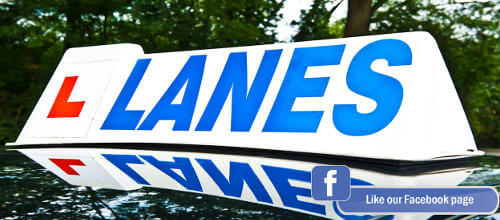
Road safety – it’s a topic we speak about a lot, and one that is bound to be mentioned through the course of your driving lessons, but a factor of safety that people just don’t hear enough about is how to keep children protected in the car. Whether they be your own, a sibling or relative or children you look after, the action of transporting a child within your vehicle involves additional caution and careful planning.
With a number of actions to carry out whilst both stationary and on the move, we have summarised the key points to ensure that any children within your vehicle remain safe at all times.
Where should children be seated?
It is recommended that young children should sit in the back seat of the vehicle, facing the rear, for as long as possible. However, small children are able to be seated in the passenger seat if the correct safety precautions are followed. These include:
- Seating the child facing the rear and deactivating the front airbags
- If the child is to be seated facing the front of the vehicle, you must push the chair back as far as it will go to maximise space between the child and the dashboard. The airbags should remain on.
There isn’t really a right or wrong when it comes to choosing which side of the vehicle the child should sit when in the back seat. It is most often down to personal preference. For younger, rear-facing children, some drivers like to install a mirror to the headrest, allowing them to see their face when looking in the rear-view mirror. For older children, drivers use regular verbal communication and so don’t feel the need to see the child at all times. If you do feel anxious, position them in a seat that remains visible in your rear-view mirror, preventing you from turning around whilst on the move and risking an accident. Additionally, you should get into the habit of parking in a location where you can safely remove the child from the car on the kerbside, away from moving traffic.
The laws on booster seats
All children under the age of 12 or the height of 1.35 meters are required by law to remain in a booster seat. Those under this age and height must be seated within an appropriate child restraint that is suitable for their own size. This can mean a baby seat, child seat, booster seat or cushion. If children are seated on the cars own seating, the seatbelt could cut into their neck or face rather than fit across their chest, causing injury whilst on the road or becoming ineffective if a road traffic accident did occur. If you weren’t to follow these laws, you could face a penalty of £100 as well as receiving points on your licence.
Before seating the child in the correct restraint, you must check that it is secured correctly. You should also remove any padded outer-clothing such as coats before buckling up, allowing the seatbelt to remain tight to the body and therefore, more protective.
Secure those seatbelts
Did you know that in the UK, it is actually illegal for drivers and passengers of all ages to travel in a vehicle without a seatbelt? It will be the responsibility of the driver to ensure that all passengers are secured correctly, or they could face a penalty up to £500. This includes the seatbelts of children. Securing two children into one seatbelt is classified as a law-breaking offence, as is travelling with a child on your lap.
If child passengers are old (and mischievous) enough to unplug theirs whilst on the road, they should be educated on safety and the law before the journey begins. With all children, you should check in regularly throughout the course of the drive to ensure that they remain securely buckled up at all times.
Contact Lanes School of Driving
Check the doors and windows
Child locks are a saviour for drivers whilst on the road. Children of all ages are experimental and learn by touching things, but you wouldn’t want this to be their door handle. By activating the child lock, the doors in the back seat of the vehicle will only be able to open by use of the external handle, leaving the internal one ‘useless’ until the lock is removed again.
Windows can be operated in the same way. Although they may appear to be less dangerous if opened, electric windows are causing a surprising rise in injuries to children travelling in the back seat, with drivers doing up the windows without the knowledge of an arm remaining out of it which then becomes trapped. Whilst on the move especially, drivers should keep the back windows up and locked, preventing waving arms from excitable children from causing harm to passing cyclists and other road users, or harm to themselves.
The aspect of keeping children safe in the car can be daunting, but our team at Lanes School of Driving are available for any advice you are seeking before heading out on the road with one in tow. Give us a call on 020 8166 5678 or drop us an email at and we will be happy to help you.

